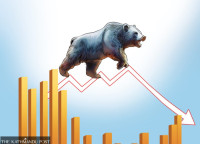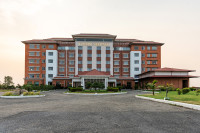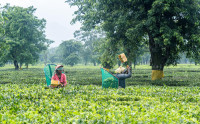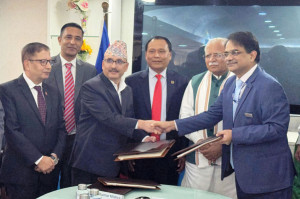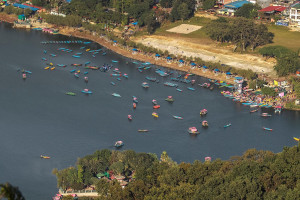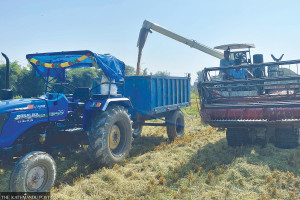Money
ADB revises growth rate forecast upward to 4.9 percent
The Asian Development Bank (ADB) has made an upward revision of Nepal’s economic growth forecast for the current fiscal year beginning mid-July by 0.2 percent to 4.9 percent, attributing it to a better-than-expected paddy harvest despite the August floods.
The Asian Development Bank (ADB) has made an upward revision of Nepal’s economic growth forecast for the current fiscal year beginning mid-July by 0.2 percent to 4.9 percent, attributing it to a better-than-expected paddy harvest despite the August floods.
The ADB’s forecast is more than 1 percentage point lower than the growth projected by the government, and 0.3 percentage point higher than the forecast made by the World Bank.
This is a slight upward revision from the 4.7 percent growth forecast published in the September edition of Nepal’s Macroeconomic Update 2017, the ADB said on Wednesday. In the last fiscal year, Nepal registered an economic growth of 6.9 percent, the highest growth since 1994-95, backed by a record high paddy harvest.
Preliminary statistics of the Agriculture Ministry show that paddy production this fiscal year 2017-18 will total 5.1 million tonnes, down 1.5 percent from the previous year. The August floods had been expected to hit paddy production hard, but there was less damage than anticipated, said Manbar Singh Khadka, an economics officer at the ADB.
The production of other summer crops like maize and millet is expected to increase too. However, a prolonged winter drought is expected to bring down output of winter crops, mainly wheat. Overall, the agriculture sector is expected to register a growth of 3 percent, down from 5 percent last year.
However, the services sector is expected to remain buoyant given the expansion of wholesale and retail trade, financial intermediation and travel and tourism sectors. “We are happy that Nepal received nearly a million tourists last year, cheering the service sector, but this is not enough looking at the potential Nepal possesses,” said Sharad Bhandari, principal economist at the ADB. “This is one area that can improve things in Nepal.” Amid concerns about ballooning imports, Bhandari said that imports were likely to increase considering the level of investment in infrastructure like roads, hydropower, cement plants and hotels.
The ADB said that even with the increased capacity utilization of industries, industrial growth is set to be lower this fiscal year compared to last year, largely due to low investment in the manufacturing sub-sector for years owing to political instability and structural bottlenecks.
On the demand side, substantive growth in government expenditure and a moderate uptick in investment will drive growth. The construction needs, particularly for establishing provincial and local governments, the acceleration of post-earthquake reconstruction, and planned disbursement of relief grants to earthquake victims will induce growth, it said.
“The government’s expenditures have increased significantly this fiscal year partly for local, provincial and parliamentary elections. Additionally, the government has apportioned a fiscal transfer of Rs232.2 billion (about 8.0 percent of GDP) to local and provincial governments under the federal structure of governance.
The economic growth of 5.5 percent is envisaged for the next fiscal year 2018-19. This higher forecast hinges on the assumption of a normal monsoon and acceleration of ongoing mega projects, the ADB said. Notably, the 456 MW Upper Tamakoshi Hydropower Project will likely be connected to the national grid by the next fiscal year, ending the country’s reliance on power imports at least during the rainy season.
However, downside risks to outlook in the next fiscal centres on limited experience and capacity, especially in the provincial and local governments and challenges to smooth implementation of federalism, it said.
“The budget deficit may widen owing to increased spending but weak revenue mobilization capacity of newly constituted local and provincial governments. The current account deficit may widen as exports and tourism receipts do not sufficiently compensate for weaker remittance growth.”
The average annual inflation rate is expected to increase moderately to 5.5 percent from 4.5 percent last year. This is below the inflation target of 7 percent set by Nepal Rastra Bank, the central bank.





 18.12°C Kathmandu
18.12°C Kathmandu